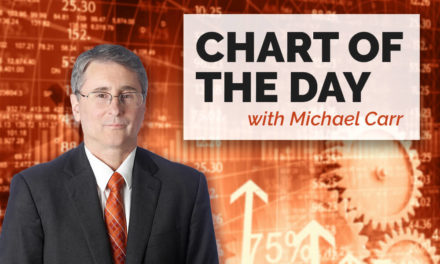The price-to-earnings (P/E) ratio is a popular investment tool.
But applying the P/E ratio in the most common way is fatally flawed. Is the PEG ratio a better gauge of market valuation?
First, let’s define the P/E ratio. It’s the current price of a stock or index divided by earnings per share (EPS). For a stock trading at $10 with EPS of $1, the P/E ratio is 10. Value investors look for stocks with low P/E ratios.
That can, and often does, lead to disaster. The problem with low P/E ratio stocks is that sometimes they deserve a low P/E ratio. A company should be cheap, for example, when it’s headed to bankruptcy.
Value investors tend to ignore the fact that different stocks should have different P/E ratios. They may say a stock is cheap when the P/E ratio is under 10. But if the company is failing, it deserves a single-digit P/E ratio.
On the other hand, a company growing rapidly deserves a high P/E ratio. Growth companies could be bargains with a ratio above 30.
With a small modification, we can adapt the P/E ratio to account for those differences. That modification is known as the PEG ratio.
What Is the PEG Ratio?
The PEG ratio divides the P/E ratio by the EPS growth rate. Stocks are trading at fair value when the PEG ratio is equal to 1. This means the P/E ratio equals the earnings growth rate.
A low PEG ratio highlights undervalued opportunities, no matter what the P/E ratio is. A high PEG ratio warns of overvaluation.
Applying this idea, for a stock growing earnings at 10%, the P/E ratio should be 10. When earnings growth is 40%, the P/E ratio should be 40. This stock’s a buy even if the P/E ratio is 39.
The chart below shows the PEG ratio for the S&P 500 Index. The current level of 2.0 is the highest of the past 20 years.
S&P 500 PEG Ratio

Source: Standard & Poor’s.
The PEG ratio is high right now because earnings growth rates are low. In the past a high PEG ratio preceded below average market returns.
This ratio is another worrying sign for the bulls. It says fundamentals are weak and stocks are overvalued.
To get back to an average PEG ratio, either stock prices must fall, or the EPS growth rate must increase.
During a global pandemic, the prospects of earnings growth are weak while the prospects of a decline in prices are relatively high.
• Michael Carr is a Chartered Market Technician for Banyan Hill Publishing and the Editor of One Trade, Peak Velocity Trader and Precision Profits. He teaches technical analysis and quantitative technical analysis at New York Institute of Finance. Mr. Carr also is the former editor of the CMT Association newsletter Technically Speaking.
Follow him on Twitter @MichaelCarrGuru.




